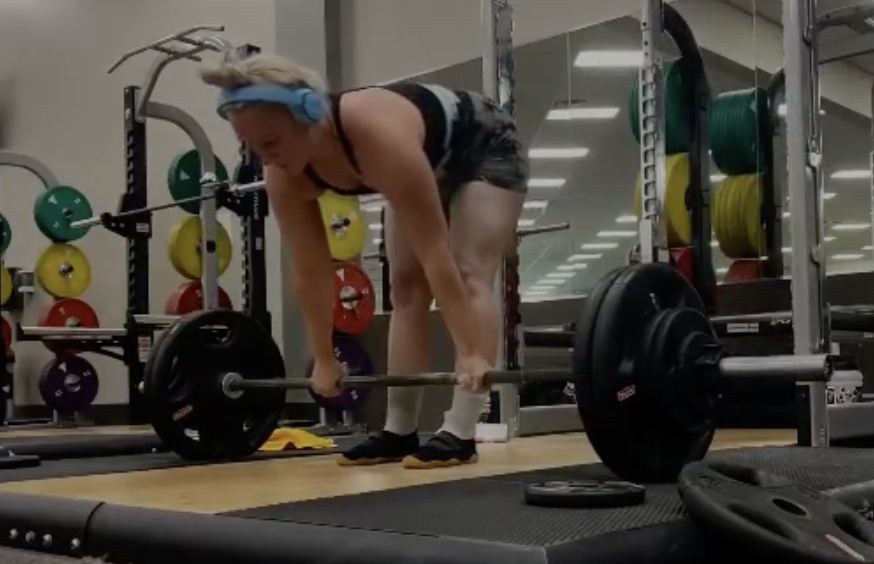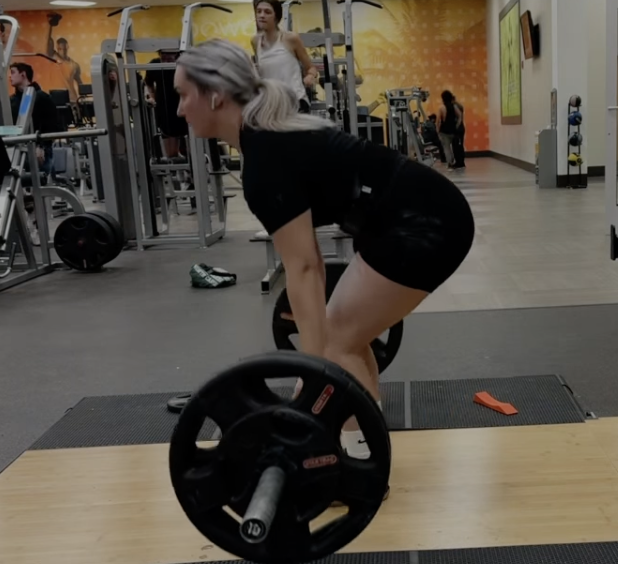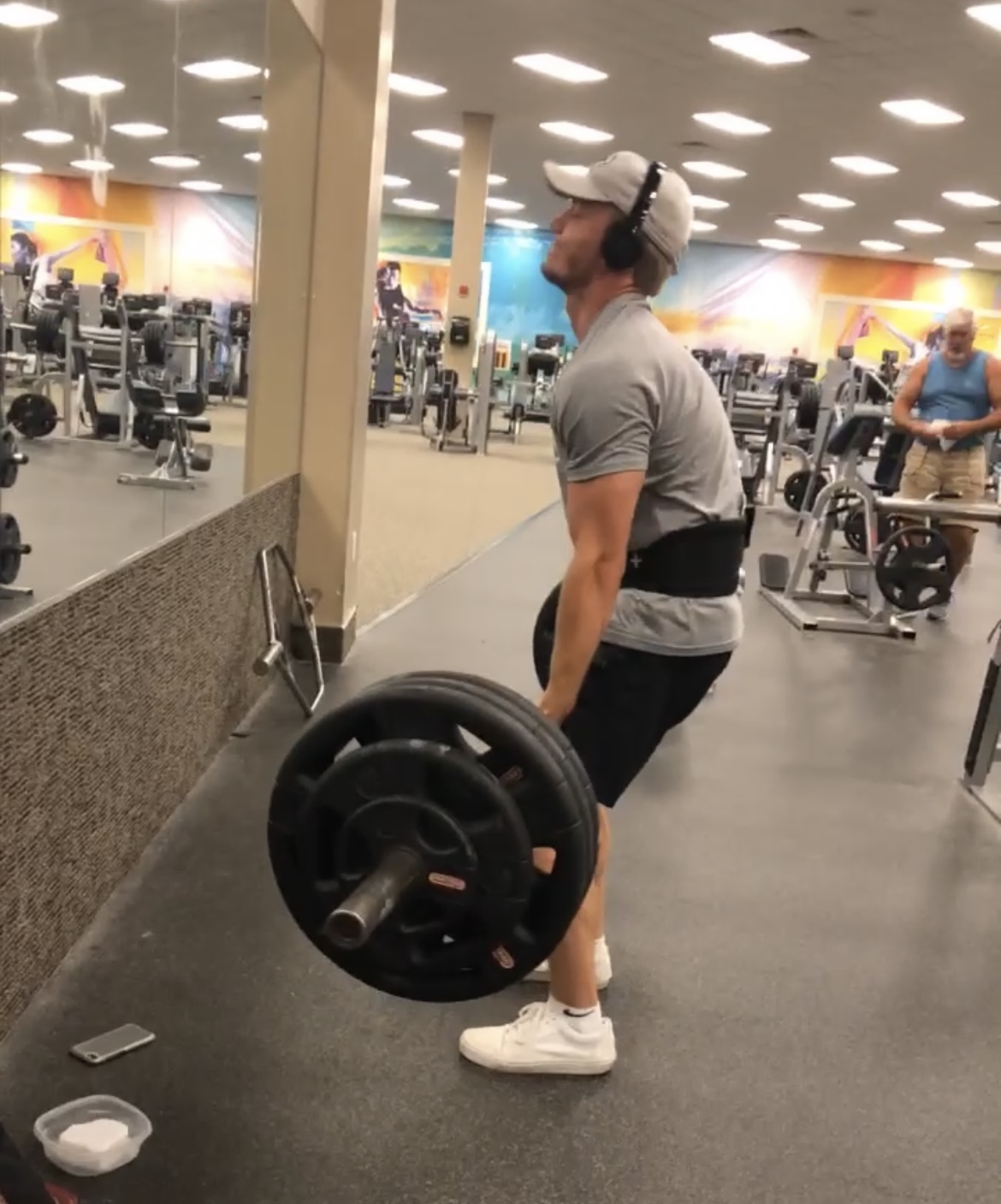Is The Deadlift a Back or Leg Exercise
Written by The Boostcamp Editors
Should deadlifting be in your leg routine? Or your back routine?
What if there was an exercise that could target multiple muscle groups in the body, build strength, and promote overall fitness? Well, there actually is, and that exercise is none other than the deadlift. Deadlifts are a highylypopular compound exercise that engages the entire posterior chain, including the muscles of the lower body all the way up to the traps. Whether people are training for bodybuilding or powerlifting, or some other sport, the deadlift is often an exercise included in the training routine. But the question remains: are deadlifts primarily a leg exercise or a back exercise?
This is an often-debated question, as many people state that the deadlift is an exercise that belongs on one day over the other. In this blog, we will explore the different muscles worked during deadlifts, the benefits they provide, and whether deadlifts are better suited for leg day or back day. Let’s dive in.
Understanding Deadlifts

Before we dive into the leg vs back debate, let's first understand what deadlifts are and why they are an important exercise in any training routine, whether that is for bodybuilding or powerlifting, and everything in between. Deadlifts involve lifting a loaded barbell from the ground to a standing position, using a hip hinge motion. This compound exercise targets multiple muscle groups, making it an efficient and effective choice for building strength and muscle mass. By engaging the muscles of the lower body, back, and upper body, deadlifts promote muscular endurance, improve range of motion, and contribute to overall body strength.
When performing deadlifts, the primary muscles engaged are in fact the glutes and hamstrings, which come into action during the hip hinge motion and hip extension. However, deadlifts are not limited to the lower body. They also activate muscles in the upper body, such as the erector spinae and latissimus dorsi, as well as the muscles of the upper body, including the trapezius, rhomboids, and deltoids. This makes deadlifts a compound exercise, recruiting muscles from the entire posterior chain. The posterior chain refers to the muscles on the back of the body, from the glutes and hamstrings to the spinal erectors and upper back muscles.
By targeting multiple muscle groups simultaneously, deadlifts provide a full-body workout, enhancing overall strength, muscle growth, and fitness level.
Are Deadlifts a Leg Exercise?
Now, let's address the age-old question: are deadlifts primarily a leg exercise? While deadlifts do involve the muscles of the legs, they are not solely a leg exercise. As stated above, deadlifts engage the entire posterior chain, which includes muscles of the lower back, glutes, hamstrings, and even the traps. Not to mention, they also hit the arms and forearms. However, the leg muscles do play a crucial role in the execution of deadlifts, making them a solid exercise for leg day.
Role of Leg Muscles in Deadlifts
In deadlifts, the leg muscles, particularly the glutes and quadriceps, play a significant role. The gluteus maximus, the largest muscle in the body, is responsible for hip extension, which is a key movement in the deadlift. The quadriceps, located in the front of the thigh, help to stabilize the lower body during the lift. Additionally, the adductor magnus, a muscle of the inner thigh, is activated during sumo deadlifts, another deadlift variation. Strengthening the leg muscles through deadlifts not only improves lower body strength but also contributes to a well-rounded leg workout. Therefore, including deadlifts on leg day is a good idea to target the leg muscles and add variety to your lower body training routine.
Benefits of Deadlifts for Leg Muscles
Deadlifts offer several benefits for the leg muscles. First and foremost, deadlifts promote muscle growth and strength in the entire lower body.. The compound nature of the exercise, involving the entire posterior chain, activates multiple muscle groups simultaneously, leading to increased muscle mass and enhanced muscular endurance. Deadlifts also provide a lower body exercise that targets the leg muscles in a functional and practical way.
The movements involved in deadlifts mimic everyday activities, such as lifting heavy objects from the ground, making them highly functional exercises for the lower body. By incorporating deadlifts into your leg day routine, you can effectively develop strong and resilient leg muscles, enhancing both form and function.
Deadlift Variations Focusing on Leg Muscles
In addition to the traditional deadlift, there are deadlift variations that specifically target the leg muscles. These variations can add variety to your leg day routine and further stimulate muscle growth in the lower body. Some deadlift variations that focus on the leg muscles include:
Sumo Deadlift: This variation involves a wider stance, placing greater emphasis on the inner thigh and hip muscles, such as the adductor magnus.
Romanian Deadlift: The Romanian deadlift primarily targets the hamstrings and glutes, making it an excellent exercise for developing strength and muscle activation in the posterior chain.
Conventional Deadlift: The conventional deadlift, often referred to as the standard deadlift, engages the entire lower body posterior chain, including the gluteus maximus, hamstrings, and spinal erectors.
By incorporating these deadlift variations into your leg day routine, you can precisely target the leg muscles and add variety to your workout, leading to well-rounded leg development and improved overall lower body strength.
Are Deadlifts a Back Exercise?
While deadlifts primarily target the leg muscles, they also heavily engage the muscles of the back, making deadlifts a key exercise for back day as well. Let's dive deeper into the role of the back muscles during deadlifts and the benefits they provide.
Role of Back Muscles in Deadlifts
Deadlifts require strong back muscles to maintain proper form, stability, and support throughout the lift. The back muscles, particularly the erector spinae and latissimus dorsi, play a crucial role in deadlifts. The erector spinae, which is a group of muscles that runs along the spine, stabilizes the back and helps maintain an upright position during the lift. The latissimus dorsi, or lats for short, are broad muscles located in the upper body that add strength and support to the entire back. Engaging the back muscles during deadlifts not only strengthens the upper back but also contributes to overall back strength, stability, and good posture.
Benefits of Deadlifts for Back Muscles
Deadlifts offer several benefits for the back muscles, making them an important exercise for back day. When performed correctly, deadlifts promote muscle growth and strength in the entire back, including the upper back muscles, erector spinae, and latissimus dorsi. By engaging the muscles of the upper body, deadlifts provide a comprehensive back workout, targeting multiple muscle groups simultaneously. This not only improves the strength of the back muscles but also contributes to better posture, back health, and overall upper body strength. Incorporating deadlifts into your back day routine can result in improved muscle development, enhanced back strength, and a more resilient and functional back.
Deadlift Variations Focusing on Back Muscles
In addition to the traditional deadlift, there are deadlift variations that specifically target the back muscles. These variations can add variety and further stimulate muscle growth in the back. Some deadlift variations that focus on the back muscles include:
Rack Pulls: Rack pulls are partial deadlifts where the barbell is lifted from a higher starting position, typically from the knees or mid-thigh. This variation places greater emphasis on the back muscles, particularly the erector spinae.
Should You Program Deadlifts into Leg or Back Day?

Now that we have discussed the muscles worked during deadlifts and the benefits they provide, let's address the question of whether deadlifts are best performed on leg day or back day.
Factors Influencing the Choice
The decision of whether to perform deadlifts on leg day or back day depends on several factors, including your workout routine, fitness level, and the impact on subsequent exercises. Some factors to consider when making this choice include:
Workout Routine: The structure of your workout routine, including the number of training days and the muscle groups targeted, can influence the placement of deadlifts.
Fitness Level: Your current fitness level and exercise capacity should be taken into account when deciding whether to perform deadlifts on leg day or back day.
Subsequent Exercises: Considering the impact of deadlifts on the muscles involved in subsequent exercises is important, as it can affect your performance and the effectiveness of your workout.
By taking these factors into consideration, you can determine the best day to incorporate deadlifts into your training routine, whether it's leg day, back day, or a separate day dedicated solely to deadlifts.
Expert Opinions and Research
When it comes to the debate of leg day vs back day for deadlifts, personal preference, fitness goals, and research all play a role. While there is no one-size-fits-all answer, expert opinions and research can provide insight into the decision-making process.
Research suggests that incorporating deadlifts on leg day can enhance lower body strength, muscle mass, and overall fitness. On the other hand, fitness experts emphasize proper form, injury risk management, and personal preference when deciding the training day for deadlifts. Some trainers advocate for including deadlifts as part of the leg day routine, while others recommend a separate day dedicated to deadlifts.
Ultimately, the best day for deadlifts may vary from person to person, depending on individual fitness goals, workout routine, and personal preference. It's important to evaluate the impact of deadlifts on your body, listen to your body's signals, and make adjustments accordingly.
Performing Deadlifts on Leg Day
If you choose to incorporate deadlifts on leg day, there are some tips and precautions to keep in mind to maximize your workout and minimize the risk of injury.
Evaluating the Impact
When performing deadlifts on leg day, it's important to evaluate the impact they have on your leg muscles, muscle endurance, and overall lower body strength.
Deadlifts target the leg muscles, including the glutes, quadriceps, hamstrings, and even the calves, providing an effective lower body exercise. By engaging these muscles, deadlifts promote muscle growth, strength, and endurance in the legs, contributing to improved athletic performance and functional fitness.
It's worth noting that heavy deadlifts, performed with proper form and gradually increasing weight, can have a significant impact on leg muscle development and overall lower body strength. However, it's essential to listen to your body, monitor muscle fatigue, and adapt the intensity of your deadlifts on leg day accordingly to avoid overexertion and injury. For example, if you deadlift on leg day, you might not want to squat, and if you do you may notice that you are not able to lift as heavy or may feel excessive strain.
Performing Deadlifts on Back Day
Alternatively, deadlifts can also be incorporated into your back day routine, targeting the muscles of the back and upper body. Let's explore some tips and precautions for performing deadlifts on back day.
Tips and Precautions
Proper form: Maintaining good form, including a strong back position, is crucial during deadlifts on back day to prevent injury and maximize the benefits of the exercise.
Injury risk management: Be mindful of the risk of injury associated with heavy weights and lifting, especially on back day. Pay close attention to your form, engage the proper muscles, and listen to your body's signals to avoid injury.
Gradually increase weight: When performing deadlifts on back day, gradually increase the weight as you progress, ensuring that your muscles, particularly the back muscles, can handle the load safely and effectively.
Warm-up and cool-down: Incorporate proper warm-up and cool-down routines, including stretches and mobility exercises, or even some light cardio, to prepare your back muscles for the demands of deadlifts and promote recovery afterward.
Utilize lifting belts: If necessary, consider utilizing a lifting belt to provide additional back support and stability, especially when lifting heavier weights during deadlifts on back day.
By following these tips and precautions, you can perform deadlifts effectively on back day, specifically targeting the back muscles, promoting back strength, and minimizing the risk of injury.
Assessing the Impact
When incorporating deadlifts on back day, it's important to assess the impact they have on the back muscles, muscle growth, and overall back strength.
Deadlifts engage the entire posterior chain, including the muscles of the back, erector spinae, and latissimus dorsi, making them an effective exercise for back development. By targeting these muscles, deadlifts promote muscle growth, strength, and endurance in the back, leading to improved upper body strength, back muscle development, and overall back stability. Deadlifts on back day provide an opportunity to focus specifically on the back muscles, creating a dedicated deadlift day that can result in significant gains with proper form and heavy weights. However, it's crucial to evaluate the impact of deadlifts on your back muscles, monitor muscle fatigue, and adapt the intensity of your deadlifts on back day as needed to prevent overexertion and reduce the risk of injury.
By assessing the impact of deadlifts on back day, you can gauge the effectiveness of your back day workout routine, track your progress, and adjust your training to meet your fitness goals.
Mistakes to Avoid While Deadlifting

To ensure the safe and effective execution of deadlifts, it's essential to avoid common mistakes that can compromise form, increase injury risk, and limit the benefits of the exercise.
Common Errors of Deadlifts
Here are some of the most common errors to avoid when deadlifting:
Lifting with your back, not your legs: This is a common mistake that can lead to excessive strain on the back muscles. It's important to initiate the movement with a hip hinge, utilizing the leg muscles to lift the weight.
Arching the back excessively: Maintaining a neutral spine position is crucial during deadlifts. Excessive arching of the back can put unnecessary stress on the spinal erectors and increase the risk of injury.
Using an incorrect grip on the barbell: The grip on the barbell should be secure and comfortable. Avoid using a grip that feels awkward or compromises your form and stability.
Not maintaining a neutral spine position: A neutral spine, where the natural curves of the spine are maintained, is essential for proper alignment and injury prevention during deadlifts.
Failing to lower the weight in a controlled manner: Lowering the weight in a controlled manner ensures proper muscle engagement and reduces the risk of injury. Avoid dropping the weight or allowing it to free fall.
Tips for Correct Deadlift Form
To execute deadlifts with proper form, follow these tips:
Focus on the hip hinge: Initiate the movement by hinging at the hips, pushing the glutes back, and keeping the back straight, ensuring that the primary movers of the exercise, the leg muscles and glutes, are engaged.
Keep your chest up and shoulders back: Maintaining an upright posture throughout the lift helps to stabilize the upper body and maintain proper form.
Drive through the heels, not the toes: The weight should be shifted onto the heels, allowing for proper weight distribution and muscle activation.
Squeeze your glutes at the top of the movement: Fully extend the hips and squeeze the glutes at the top of the motion, ensuring proper engagement of the gluteus maximus and complete the range of motion.
Engage the lats to stabilize the upper body: Actively engage the muscles of the upper back, particularly the latissimus dorsi, to stabilize the upper body and maintain proper form throughout the entire lift.
By following these tips for correct form, you can ensure that your deadlifts are safe, effective, and maximize the benefits of the exercise.
The Verdict: Is It Better to Deadlift on Leg Day or Back Day?
Including deadlifts on leg day allows for targeting the posterior chain, while performing them on back day engages the entire posterior chain. The decision should be based on personal preference and fitness goals, or incorporating deadlifts on both days may yield the best results.
Where to Find the Best Deadlift Programs
When it comes to finding some quality workout routines that help with your deadlift and really forward your progress, check out the Boostcamp App for some great programs. Whether that is push pull legs or upper lower or whatever else you may be trying to do, Boostcamp has something for you. You would want to find a program that caters to your needs, gives you good accessories to do, and guides you in the right direction, making sure that you are making the most gains. If you are looking to stay on track and continue with linear progression, then finding a good workout program is the key, and Boostcamp is the place to go.
Conclusion
In conclusion, deadlifts are a compound exercise that engages multiple muscle groups, including the legs and the back. While they are often associated with leg exercises due to the involvement of leg muscles such as the quadriceps and glutes, deadlifts also heavily target the muscles in the back, such as the erector spinae and latissimus dorsi.
Ultimately, whether deadlifts are categorized as a leg or back exercise depends on your training goals and preferences. Incorporating deadlifts into your leg day routine can help improve leg strength and power, while including them in your back day workout can enhance back muscle development and overall strength. It's important to perform deadlifts with proper form and technique to avoid injury and maximize results.
Remember, consult with a fitness professional or trainer to determine the best approach for incorporating deadlifts into your training program. Happy lifting!
Also, be sure to follow Boostcamp on Instagram and subscribe on YouTube!


